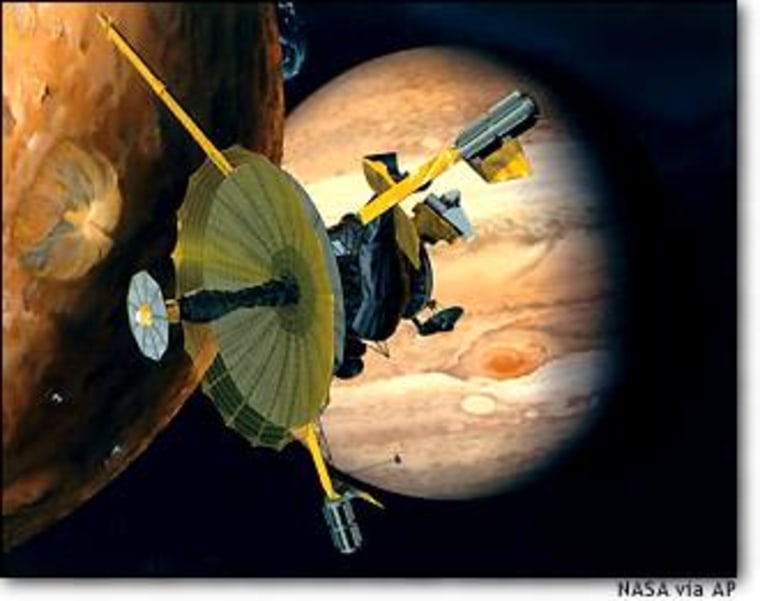NASA's aging Galileo spacecraft concluded its 14-year, $1.5 billion exploration of Jupiter and its moons on Sunday with a streaking suicide plunge into the planets turbulent atmosphere.
The spacecraft passed into the shadow of the solar system’s largest planet and several minutes later entered its atmosphere at 2:57 p.m. EDT. The unmanned spacecraft, traveling at nearly 108,000 mph, was torn apart and vaporized by the heat and friction of its fall through the clouds.
The last word from the spacecraft, including some final scientific measurements, was to arrive on earth 52 minutes later, after crossing half a billion miles of space.
Hundreds of scientists, engineers and their families at NASA’s Jet Propulsion Laboratory counted down the last seconds before the spacecraft plunged into the atmosphere.
“We haven’t lost a spacecraft, we’ve gained a new steppingstone in exploration,” said Torrence Johnson, the mission’s project scientist.
Rosaly Lopes, another scientist on the mission, called Galileo’s plunge “a spectacular end to a spectacular mission.”
“Personally, I am a little sad. I had the time of my life on Galileo and I’m a little sad to say goodbye to an old friend,” Lopes added.
Despite the glitches that plagued Galileo since its 1989 launch aboard the space shuttle Atlantis, it was one of the National Aeronautics and Space Administration’s most fruitful missions.
During its thrice-extended mission, Galileo discovered the first moon of an asteroid, witnessed the impact of a comet into Jupiter and provided firm evidence of salty oceans on three of the planet’s moons. It returned more than 14,000 images.
“It had more surprises, better stuff waiting to be discovered than we ever could have imagined. Jupiter and its moons came through,” said Andy Ingersol, a Jupiter scientist at the California Institute of Technology.
NASA opted to crash the 3,000-pound spacecraft into Jupiter to eliminate the possibility it could smack into Europa, one of Jupiter’s watery moons, and contaminate it with any microbes on board.
Galileo had nearly depleted the onboard store of fuel that NASA used to steer it during its 35 orbits of Jupiter.
Galileo is the first planetary spacecraft NASA has intentionally destroyed since it steered the Lunar Prospector into the earth’s moon in 1999.
It is not the first to dive into Jupiter: A probe released by the spacecraft did so in 1995, collecting data about the planet’s atmosphere for about an hour before it was destroyed.
NASA intends to return to Jupiter in a decade with another unmanned spacecraft called the Jupiter Icy Moons Orbiter.
